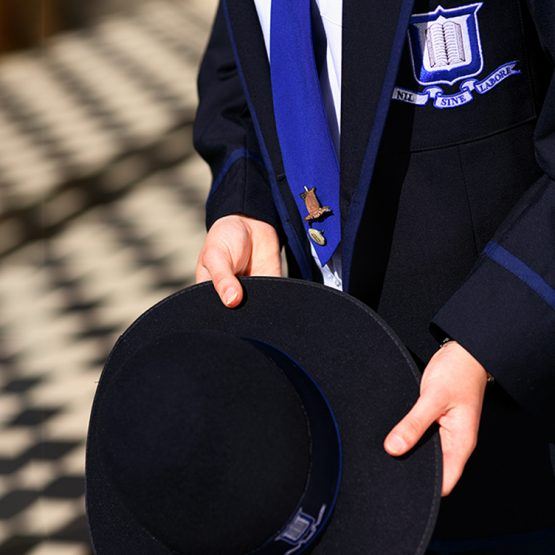Australian women have made great headway in the sphere of gender equality since the first-wave feminists fought for votes and property rights at the dawn of the 20th century. It wasn’t so long ago that women weren’t permitted to maintain their employment after marriage, apply for a mortgage or even vote.
While there’s still (rather a lot of) room for improvement, International Women’s Day is a time to pause and reflect on the hard-won victories and legislative shifts that have moulded our modern experience as women in Australia.
Some of these milestone events eventuated through the work of the pioneering women who saw the bigger picture and believed in equality. Women such as Queensland’s Susan Kiefel, who left school at 15 for secretarial college and became Australia’s Chief Justice in 2017, or Brisbane Girls Grammar School alumna Margaret Mittelheuser (1947), who blazed a trail in the 1960s as Australia’s first female stockbroker.
Other landmark changes were brought about by evolving social attitudes and even technological advances such as labour-saving devices in the home. By no means is this list exhaustive, but it illustrates some of the important progress that has been made, and of course, gives us an insight into what remains to be done:
- 1902 Non-Indigenous women are granted the right to vote and run as political candidates under the Commonwealth Franchise Act 1902. Indigenous women continued to be denied the right to vote until May 1962.
- 1921 Nearly 20 years later, a woman is finally elected in one of the states and Edith Cowan joins the Legislative Assembly of Western Australia.
- 1943 Two women, Enid Lyons and Dorothy Tangney, are at last elected to Federal Parliament as World War II rages.
- 1955 Galvanised by the invention of the automatic washing machine, second-wave feminism is born. Women now have more time to devote to a career and/or study.
- 1956 Brisbane Girls Grammar School alumna, Dorothy Hill (1924), became President of the Australian Academy of Science, the first woman to occupy this position.
- 1961 Margaret Mittelheuser (1947) becomes the first Australian woman to establish and head up a stockbroking office (in Brisbane). In 1964, she was formally endorsed by the Sydney Stock Exchange and welcomed on the trading floor.
- 1965 Professor Merle Thornton and Rosalie Bognor chain themselves to the public bar at Brisbane’s Regatta hotel, protesting their right to be there and in the process drawing attention to bigger issues such as unequal pay and the ‘marriage bar’.
- 1966 The ‘Marriage Bar’ is removed, allowing women working in the public service to continue in their jobs if they get married. In her article, The Long, Slow Demise of the Marriage Bar, Marian Sawer writes that women also struggled with “… the view that it was inappropriate for women to supervise men. Senior officers reported… that they were embarrassed by their inability to promote good female clerks because of their restriction to positions without supervisory responsibilities.”
- 1972 Women’s wages rise by around 30 per cent with the introduction of equal pay. The Conciliation and Arbitration Commission grants equal pay for men and women and a million female workers become eligible for full pay.
- 1973 Maternity leave (paid and unpaid) is introduced, enabling women to keep their jobs after having children.
- 1983 Australia signs the Convention on the Elimination of All Forms of Discrimination against Women (CEDAW).
- 1984 The Sex Discrimination Act is rolled out across Australia, which started as a private member’s bill by Susan Ryan, the then-Minister Assisting Prime Minister Bob Hawke to improve the status of women.
- 1988 Queensland’s Quentin Bryce is appointed as Australia’s second Sex Discrimination Commissioner.
- 2003 Marion Scrymgour of the NT is the first Indigenous woman to become a minister in any Australian state, territory or federal government. She will go on to become Deputy Chief Minister of the NT.
- 2010 Australia’s first female PM, Julia Gillard, is elected.
- 2016 Queenslander Susan Kiefel is appointed Chief Justice of Australia.
- 2019 Mathematician Cheryl Praeger (1965) (another Brisbane Girls Grammar School alumna) is awarded the Prime Minister’s Prize for Science for her ground-breaking contributions to mathematical theory—despite having been told early on in her career by a Queensland Government vocational counsellor that “girls don’t do maths”.
There are numerous other examples of how far we have come, and there are still ongoing battles in the fight for equality. These include the lingering gender pay gap, superannuation discrepancy, a lack of representation at board level and an unequal division of labour (emotional, logistical and physical) in the home.
Unbelievably, there are also new issues arising that past generations could not have imagined—cowardly acts like gendered abuse and harassment online (which a recent report from the eSafety Commissioner revealed prevents up to 24 per cent of women from accepting leadership roles), and sexual consent education, which will be mandatory in Australian schools from next year.
While there is some way to go, at BGGS we are educating our girls and young women to be strong and independent thinkers, to achieve their potential, to be fearless in shaping their own lives, and to challenge inequality wherever it exists. We know our women leaders of the future will find ways to speak out with courage to forge an equitable future for all.




